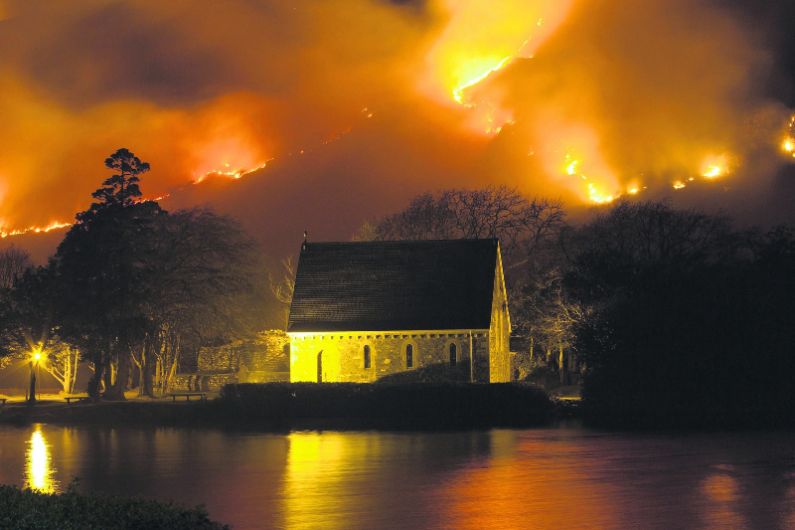Hundreds of defenceless animals are believed to have perished in the massive gorse fire at Gougane Barra last weekend.
BY JACKIE KEOGH
HUNDREDS of defenceless animals are believed to have perished in the massive gorse fire at Gougane Barra last weekend.
Conservation ranger, Clare Heardman, said it would be impossible to estimate just how many animals died as a result of the fire that covered an entire mountain in the Derrynasaggart range.
Describing the fire as ‘misguided and destructive,’ Clare pointed out that it is illegal under the Wildlife Act to light a fire between March 1st and August 31st – a provision that is there to protect breeding birds.
Clare, a conservation ranger with the National Parks and Wildlife Service in Cork and Beara, called on anyone with any information to report it to the gardaí or the National Parks and Wildlife Service.
‘With an entire mountain on fire,’ she said, ‘it would have been fatal for species that couldn’t fly away, such as lizards and hares.’
She acknowledged that any of the adult ground nesting birds, such as meadow pipits, could fly away, but their eggs and chicks would have perished.
Clare said the fire burned down the hill close to the lake, so it is possible that peregrine falcons and kestrels – who nest on rocky outcrops – would also have had casualties.
‘The smoke alone would cause the birds to abandon the nests,’ said Clare, adding: ‘Red grouse would have sustained losses, too, as would the frogs that live on the hillside and only go to water to spawn.’
Clare explained that these mountains are home to hares rather than rabbits, who tend to be more low-land creatures.
‘The hares have their young on the surface. They don’t burrow, like rabbits, so they would have been affected too.’
Normally, Clare said, sheep and lambs could escape by running away, but in a broad mountain fire, they would likely have become surrounded and trapped by the flames.
Local woman, Mary McCarthy, witnessed the destruction on Sunday night and in a video she made on her mobile phone, the calls of distressed sheep are clearly audible. She described the sound they made as ‘heart-breaking.’
Mary’s video shows the fire on the ridge of the hill. It also shows how sparks and ash floated like snowflakes on the downwards draft.
She and her husband, John, were standing at the edge of the lake and the sparks fell all around them, with the fire reflected vividly in the lake.
Mary told The Southern Star: ‘It was the kind of night that you won’t see again.’
But in all of the mayhem that took place over the last few days there was at least one light-hearted story.
Skibbereen fireman, Tom Collins, helped a baby hare, a leveret, whose fur had got singed in a gorse fire on the Sheep’s Head peninsula on Monday.
The photo went viral after he posted it on his Facebook page.
‘I gave it a wash down and a drink of water out of the bottle I was carrying, and it went off on its way afterwards,’ said Tom.
Clare Heardman has also called on anyone concerned about uncontrolled hill fires in Ireland to consider making a submission to the Public Consultation on the National Clean Air Strategy.
Submissions can be made online at www.dccae.gov.ie by 5pm on Friday, April 28th.









